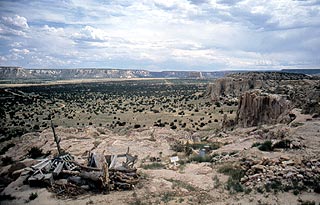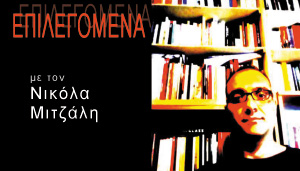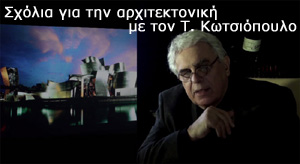ΜΟΝΙΜΕΣ ΣΤΗΛΕΣ
Ταξίδια

03 Δεκέμβριος, 2006
“Cloud-set” Acoma, USA
Η Acoma είναι ένα από τα 18 ινδιάνικα pueblos που σώζονται σήμερα κατά μήκος του ποταμού Rio Grande που διασχίζει ό,τι αποτελεί το κεντρικό μέρος των Colorado και βόρειου New Mexico.
Σ’αυτό το μεγαλόπρεπο φυσικό περιβάλλον στο οποίο εναλλάσσονται βαθιά φαράγγια, επίπεδες mesas (λόφοι με οριζόντια κορύφωση), μικρές εύφορες κοιλάδες, βαριοί χειμώνες και θερμά γεμάτα καταιγίδες καλοκαίρια, άνθησε ο πολιτισμός των Anasazi (αυτών που ήρθαν πριν απ’ όλους τους άλλους) στο διάστημα 900-1100 μ.Χ., προτού «εξαφανισθεί» αφήνοντας πίσω του ένα από τα γοητευτικότερα μυστήρια της αρχαιολογίας. Η αμερικανίδα δημοσιογράφος και συγγραφέας Willa Cather (1873-1947, βραβείο Pulitzer 1923) ήταν από τους πρώτους που κατανόησαν την αξία του πολιτισμού των pueblos κι έγραψαν γι’αυτόν με αγάπη και σεβασμό. Οι λεζάντες –καθώς και ο τίτλος- εντός εισαγωγικών σε italic, στις φωτογραφίες που ακολουθούν είναι ελεύθερη ανασύνθεση αποσπασμάτων από ένα από τα καλύτερά της βιβλία: “Death comes for the Archbishop”, Vintage Books, 1971, (πρώτη έκδοση: 1927), που δυστυχώς παραμένει αμετάφραστο και σχεδόν άγνωστο, όπως και το υπόλοιπο έργο της, στην Ελλάδα. Οι φωτογραφίες τραβήχτηκαν το καλοκαίρι του 1994.

Άποψη της πεδιάδας από τη mesa της Ácoma.
“In all his travels the Bishop had seen no country like this. From the flat red sea of sand rose great rock mesas, generally Gothic in outline, resembling vast cathedrals. They were not crowded together in disorder, but placed in wide spaces, long vistas between. This plain might once have been an enormous city, all the smaller quarters destroyed by time, only the public buildings left, -piles of architecture that were like mountains. […] This mesa plain had an appearance of great antiquity, and of incompleteness; as if, with all the materials for world-making assembled, the Creator had desisted, gone away and left everything on the point of being brought together, on the eve of being arranged into mountain, plain, plateau. The country was still waiting to be made into a landscape.”

Στο βάθος του ορίζοντα η Enchanted (Μαγεμένη) Mesa. Τη φωτογραφία έχει τραβήξει ο Γ. Μουσούρης.
“Riding on, they presently drew rein under the Enchanted Mesa, and Jacinto told him that on this, too, there had once been a village, but the stairway which had been the only access to it was broken off by a great storm many centuries ago, and its people had perished up there from hunger.”

Γενική άποψη του pueblo της Ácoma. Διακρίνεται η σιλουέτα των πύργων του καθεδρικού της.
“The Bishop, following with his eye the straight, pointing Indian hand, saw far away, two great mesas. They were almost square in shape, and at this distance seemed close together, though they were really some miles apart. “The far one” his guide still pointed. […] he saw a flat white outline on the grey surface –a white square made up of squares. That, his guide said, was the pueblo of Ácoma. […] But how, the Bishop asked him, did men first think of living on the top of naked rocks like these, hundreds of feet in the air, without soil or water? Jacinto shrugged. “A man can do whole lot when they hunt him day and night like an animal. Navajos on the north, Apaches on the south; the Ácoma run up a rock to be safe.” […] They came down to the plain to hunt and to grow their crops, but there was always a place to go back to. […] The rock of Ácoma had never been taken by a foe but once, -by Spaniards in armour. […] The Ácomas, who must share the universal human yearning for something permanent, enduring, without shadow of change, -they had their idea in substance. They actually lived upon their Rock; were born upon it and died upon it.”

“The top of the mesa was about ten acres in extent, […] and there was not a tree or a blade of green upon it; not a handful of soil, except the churchyard, held in by a adobe wall, where the earth for burial had been carried up in baskets from the plain below. The white dwellings, two and three storeyed, were not scattered, but huddled together in a close cluster, with no protecting slope of ground orshoulder of rock, lying flat against the flat, bright against the bright, -both the rock and the plastered houses threw off the sun blindingly.”

Τυπολογία στοάς και διαμόρφωση εισόδου σε σπίτια του pueblo της Ácoma.

[…] and the Bishop followed him to his particular lair in those rows of little houses all alike and all built together. There was a ladder before Jacinto’s door which led up to a second storey, but that was the dwelling of another family; the roof of Jacinto’s house made a veranda for the family above him.

The Bishop bent his head under the low doorway and stepped down; the floor of the room was along step below the door-sill –the Indian way of preventing drafts.”


Παλιά και νέα σπίτια στο pueblo της Ácoma.

Σημάδια από το χτες

ο υπαίθριος φούρνος στην πλατεία, και το σήμερα: ελεύθερο parking.

Ο καθεδρικός του pueblo της Ácoma.
“At the very edge of the mesa, overhanging the abyss so that its retaining wall was like a part of the cliff itself, was the old warlike church of Ácoma, with its two stone towers. Gaunt, grim, grey, its nave rising some seventy feet to a sagging, half-ruined roof, it was more like a fortress than a place of worship. […] It was built early in sixteen hundred, by Fray Juan Ramirez, a great missionary, who laboured on the Rock of Ácoma for twenty years or more.”

Ντόπιοι πουλάνε φτηνά αναμνηστικά από το pueblo της Ácoma σε τουρίστες. Ο τουρισμός αποτελεί την κύρια πηγή εσόδων για το pueblo.
“Even afterward the Bishop remembered his first ride to Ácoma as his introduction to the mesa country. One thing which struck him at once was that every mesa was duplicated by a cloud mesa, like a reflection, which lay motionless above it or moved slowly up from behind it. These cloud formations seemed to be always there, however hot and blue the sky. […] The great tables of granite set down on an empty plain were inconceivable without their attendant clouds, which were a part of them, as the smoke is part of the censer, or the foam of the wave. […] The desert, the mountains and mesas were continually re-formed and re-coloured by the cloud shadows. The whole city seemed fluid to the eye under this constant change of accent, this ever-varying distribution of light. […].
[The Bishop] was on a naked rock in the desert, in the stone age, a prey to homesickness for his own kind, his own epoch, for European man and his glorious history of desire and dreams. Through all the centuries that his own part of the world had been changing like the sky at daybreak, this people had been fixed, increasing neither in numbers nor desires, rock-turtles on their rock. Something reptilian he felt here, something that had endured by immobility, a kind of life out of reach, like the crustaceans in their armour.”








